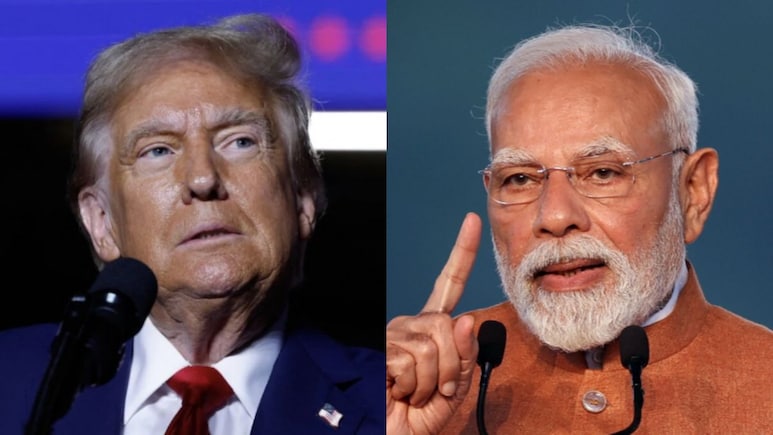
- US President Trump imposed a 50% tariff on Indian imports over Russian crude oil purchases
- The tariff is the highest by the US on any trading partner, effective from 27 August
- India may face difficult choices on Russian oil, alliances, agriculture concessions, and retaliation
US President Donald Trump has imposed 50 per cent tariff on Indian imports, citing New Delhi's imports of Russian crude. Announced on Wednesday, the 25 per cent levy takes the earlier announced tariffs of the same amount on Indian imports to US to a the highest imposed by Washington on any trading parner. It is set to take full effect by August 27.
Major US retailers like Amazon, Walmart, Target, and Gap have already paused apparel and textile shipments from India. Buyers are unwilling to share the extra cost and have asked exporters to absorb it.
The White House says the tariffs are meant to pressure India economically and diplomatically, but India calls them "unfair" and "unilateral."
The US is India's biggest export market, buying 18 per cent of everything India sells abroad and making up about 2.2 per cent of India's GDP.
What Are India's Options?
With the new rates taking effect on 27 August, the next 19 days are crucial.
Reduce Russian Oil Imports
The question is whether Prime Minister Narendra Modi will back away from Russian trade to avoid the "Russia penalty" or stand firm.
Dr Chietigj Bajpaee of Chatham House (Royal Institute of International Affairs) said India began moving away from Russian arms and oil even before Trump's pressure, describing the Russia-India relationship as in "managed decline," according to the BBC.
Deepen Other Alliances
Ajay Srivastava of GTRI, believe this could push India closer to Russia, China, and other partners.
PM Modi's upcoming visit to China for the SCO summit could even revive India-Russia-China trilateral talks.
Make Concessions In Agriculture, Dairy
Trade talks are stalled over US demands for greater market access in these sectors.
Concessions could unlock a trade deal but carry a high domestic political cost.
“For us, our farmers' welfare is supreme,” PM Modi declared at a New Delhi event. He said, “India will never compromise on the well-being of our farmers, dairy sector, and fishermen.”
Use Investment Leverage
India's "China-plus-one" appeal could still attract investors like Apple, whose semiconductor-based production is unaffected. Rivals like Vietnam offer lower tariffs, threatening momentum.
Support Exporters Directly
Japanese brokerage firm Nomura warns current export support measures may not offset such steep tariff disadvantages, and only top-level diplomacy can save a trade deal that seemed within reach weeks ago.
The government vows to take "all actions necessary" to protect national interests, while opposition leader Rahul Gandhi has called the tariffs "economic blackmail."
Retaliation
Retaliation is possible, Barclays Research says, recalling India's 2019 tariffs on 28 US goods in response to earlier steel and aluminium duties, some of which were rolled back in 2023. The next 20 days will determine whether India and the US can avoid a costly and unpredictable trade fight.
Track Latest News Live on NDTV.com and get news updates from India and around the world

